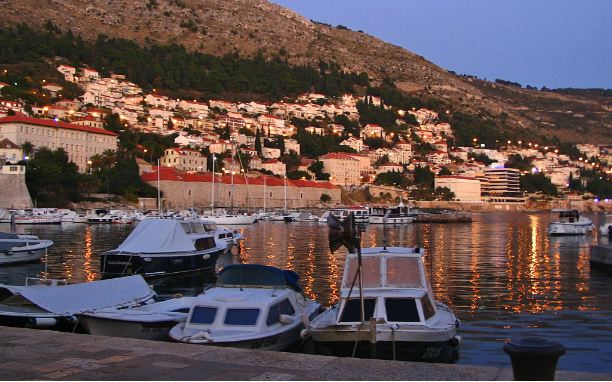To go Back at any time,
use Browser's "Previous Page"
Shortly after leaving Split, we passed through the little town of Omis. It lies at the entrance to the rugged Cetina River Gorge, another beckoning natural wonder:
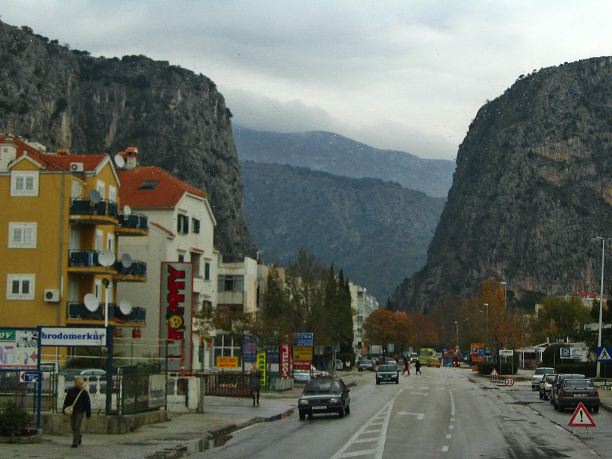
South of here, photography out the splattered coach windows became hopeless. However, by the time our tour of Dubrovnik began the next morning, skies had thankfully cleared.
Taken from the bus parking area, this shot near Pile Gate (pronounced pee-leh) looks uphill toward the Minceta Fortress which anchors the most northern point in Dubrovnik’s defensive walls:
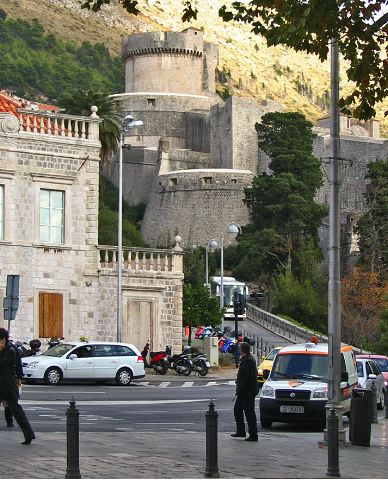
Pile Gate is approached on this stone bridge which crosses the former moat. St. Blaise, the town’s patron saint, keeps a watchful eye above the gate:
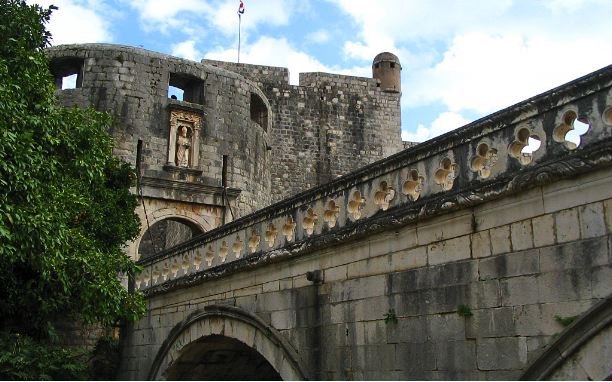
Inside the walls, this view looks up at the tower of the Franciscan Monastery and at some tempting tangerines, just out of reach. In the foreground is the bulbous dome of Onofrio’s Fountain. Water has been delivered to the city through it since 1444:

In the monastery’s cloister:
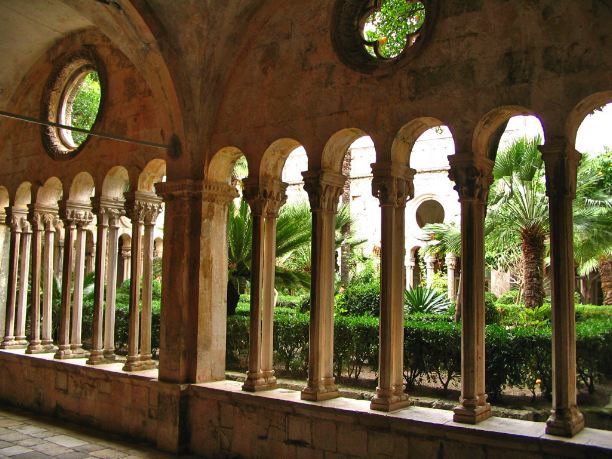
Nearby, the apothecary’s shop, established in 1317 and still in business, calls itself the oldest pharmacy in Europe.
Though dwarf-like in appearance, this statue is still recognizable as the founder of the Franciscans:
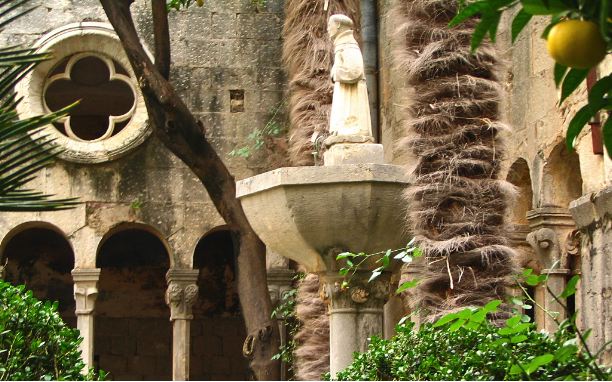
Make a mental note of this statue for you shall see it again from quite a different angle.
Ascending a few steps for a better view, here is the main street of Dubrovnik, the Stradun, stretching from Pile Gate to the harbor:

At the far end of the Stradun is the municipal bell tower, housing two busy manikins who go to work every 15 minutes:
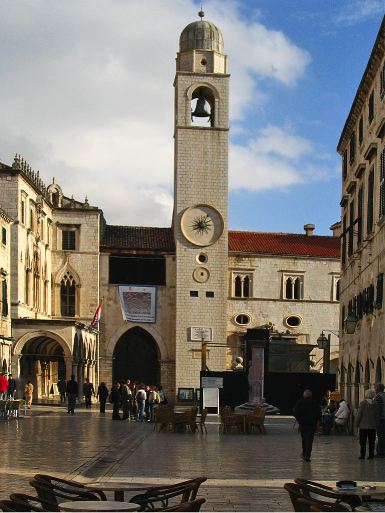
Taking a sharp right at the bell tower, going down a short distance and then turning around, the bell tower is just to the right of the Sponza Palace, once the city’s custom house and mint:

St. Blaise, you may notice, watches this side of town as well. In fact, on the left of this photo is St. Blaise’s Church. Straight ahead is Mt. Srd, the source of water for Onofrio’s Fountain.
Proceeding on, we enter the Rector’s Palace, which once housed all the offices of state plus a jail and a powder magazine (yes, you guessed it --- it blew up twice in the 15th century). However, our real reason for entering this historical building was to photograph the first, the original, the only genuine “hand rail”:
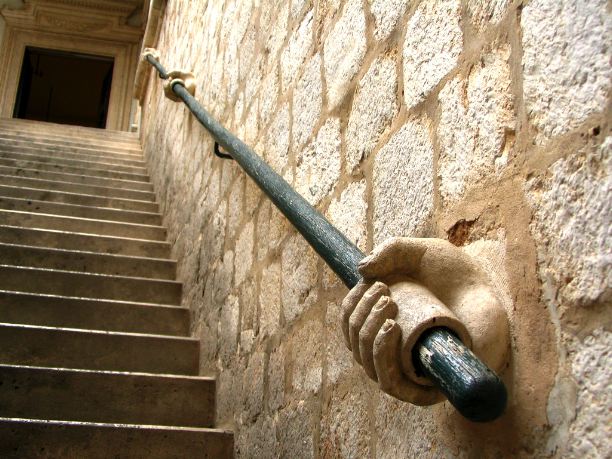
And, we’ll bet most of you armchair travelers thought a hand rail was so-named because YOUR hand goes on it. Oh, foolish notion!
Around the corner from the Rector’s palace is this pigeon-filled square, site of the morning fruit and vegetable market:

There are many streets besides the Stradun, of course, but, in comparison, they are alleys like this one:
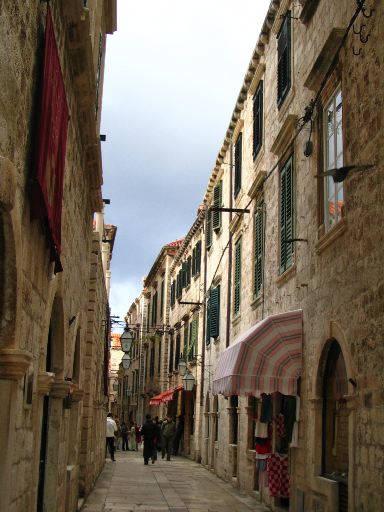
Those perpendicular to the Stradun tend to run uphill away from the city center. That’s because the Stradun is a filled-in channel that once separated the island of Regusa from the mainland.
The street shown above is actually home to many businesses. City law forbids protruding or garish business signs; so, instead of those, all the businesses located on the street are listed on a banner at the head of the street:
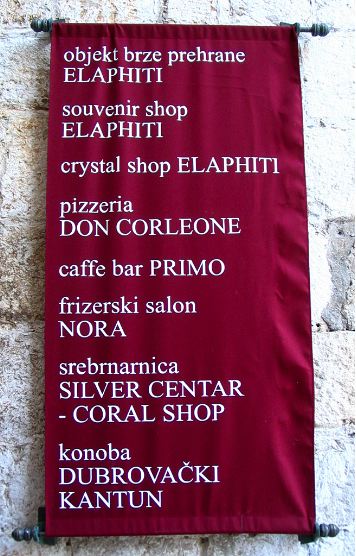
Behind the Rector’s Palace (and the bell tower) is the small boat harbor. In this photo St. John’s Fortress on the right guards the entrance to the harbor:

Looking back towards town, landmarks clearly visible are the bell tower and the Minceta Fortress:
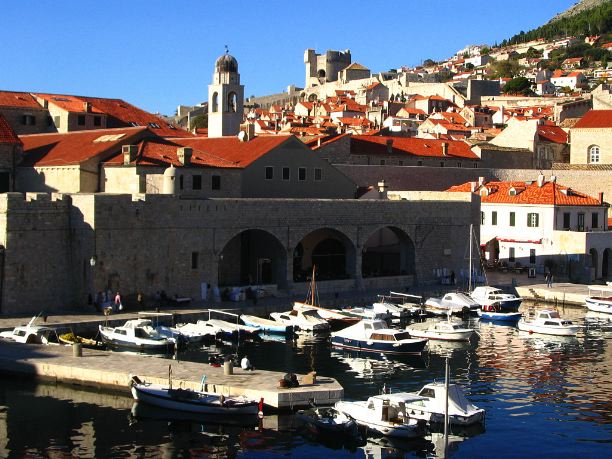
If you tarry long enough in this photogenic spot, sooner or later, you can enjoy the shimmering lights of twilight. It’s no wonder many folks prefer to dine on the waterfront:
